It might just be me, but I’ve found that it can be easy for wired branches to split away from the trunk during branch setting.
This is more of an issue for deciduous trees than for conifers, but it can happen to all species trained as bonsai.
Fortunately, there’s a simple tip that can help: take care with the transition of wire from trunk to branch. Here’s what this looks like, starting with an example of what not to do.
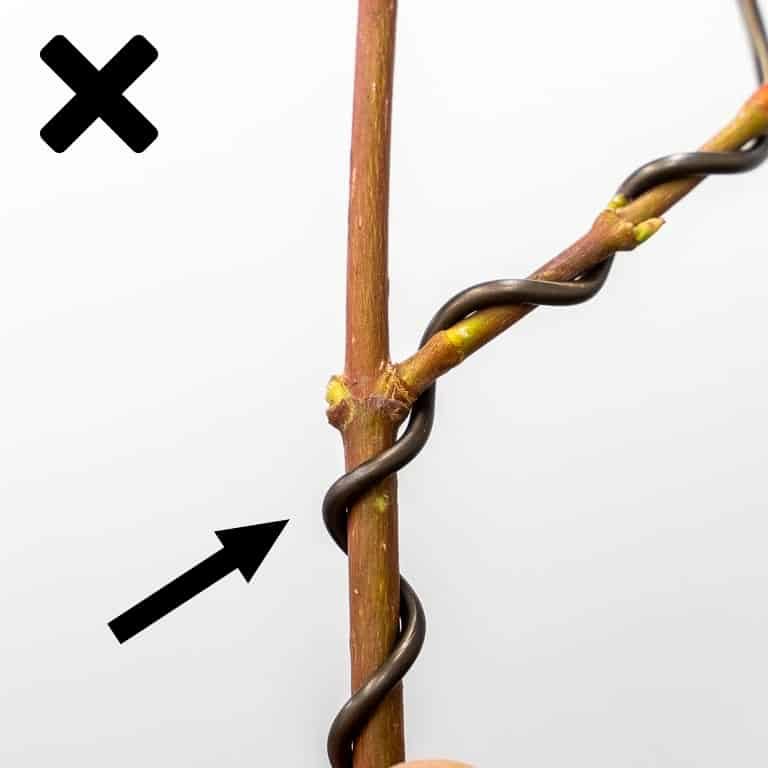
The wire doesn’t support the base of the branch
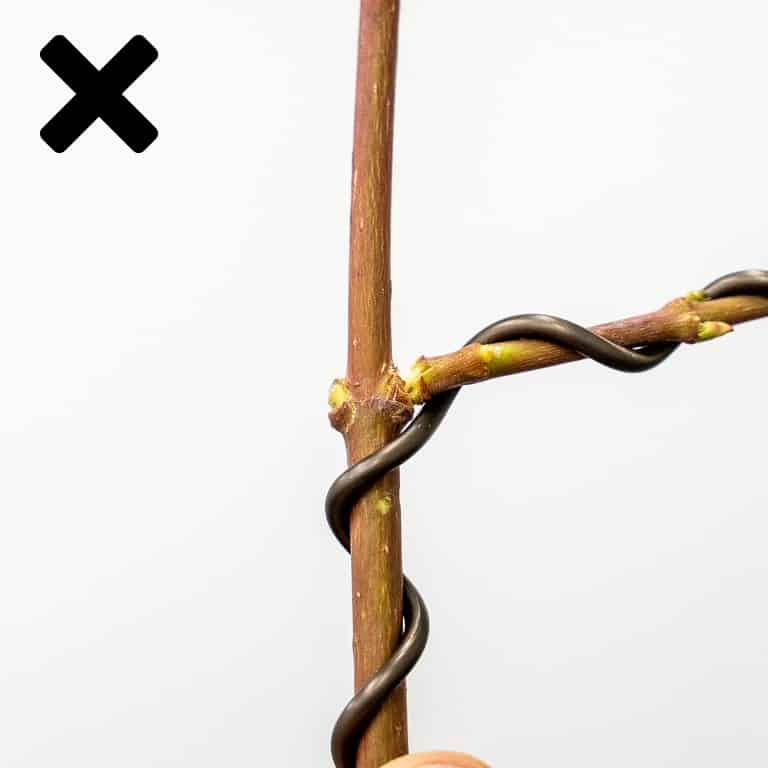
Broken branch resulting from poor wire placement
The alternative is to apply wire so it crosses the branch shoulder, the place where the branch emerges from the trunk.

Wire crossing the branch shoulder
The same problem can arise when applying wire to a Y-shaped intersection. If the lowest loop of wire is positioned below the split, it’s easy for the branch to break.
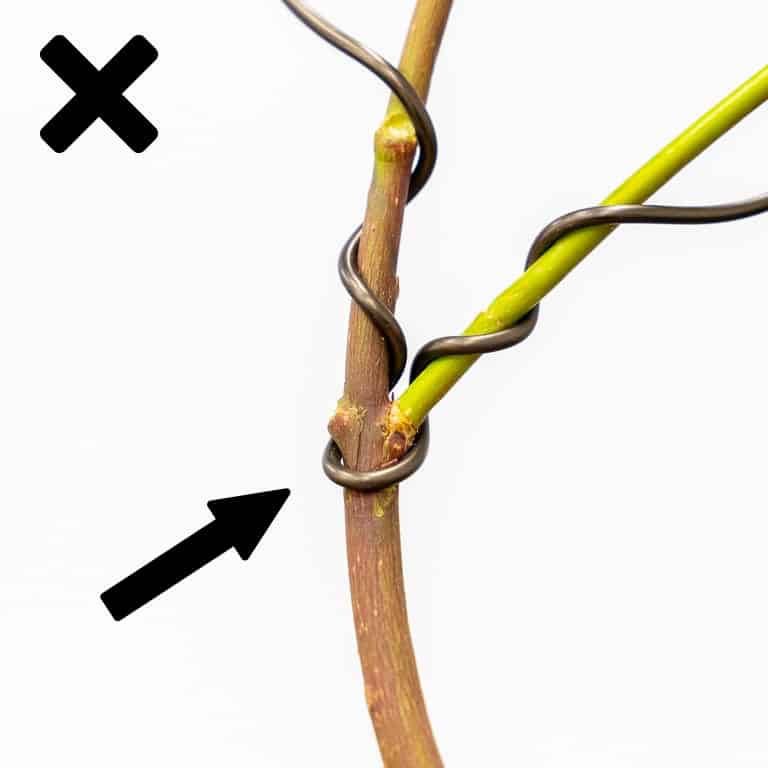
Wire incorrectly positioned below the split
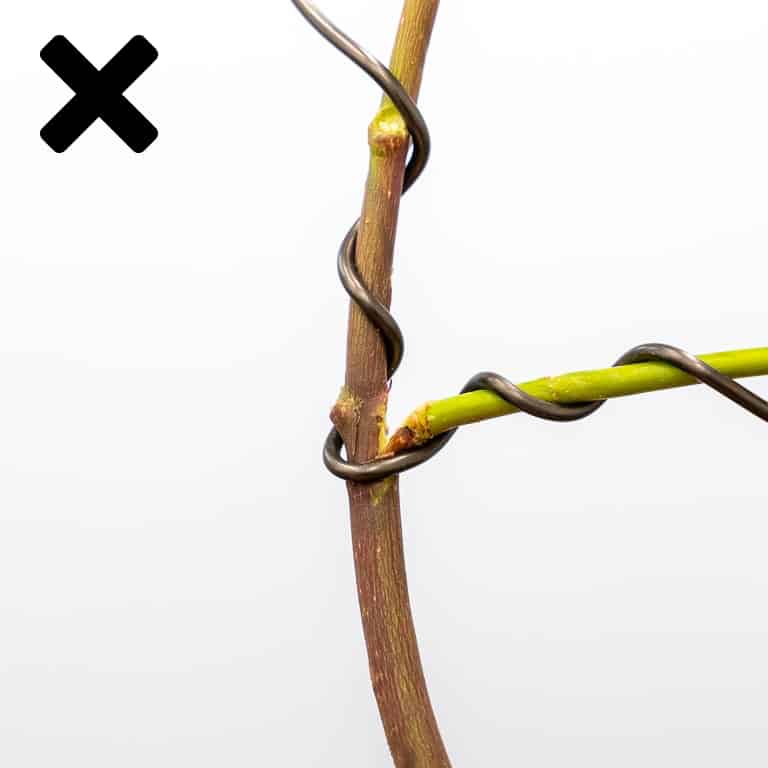
Another broken branch
As in the first example, the alternative is to apply the wire where it crosses the branch shoulder.
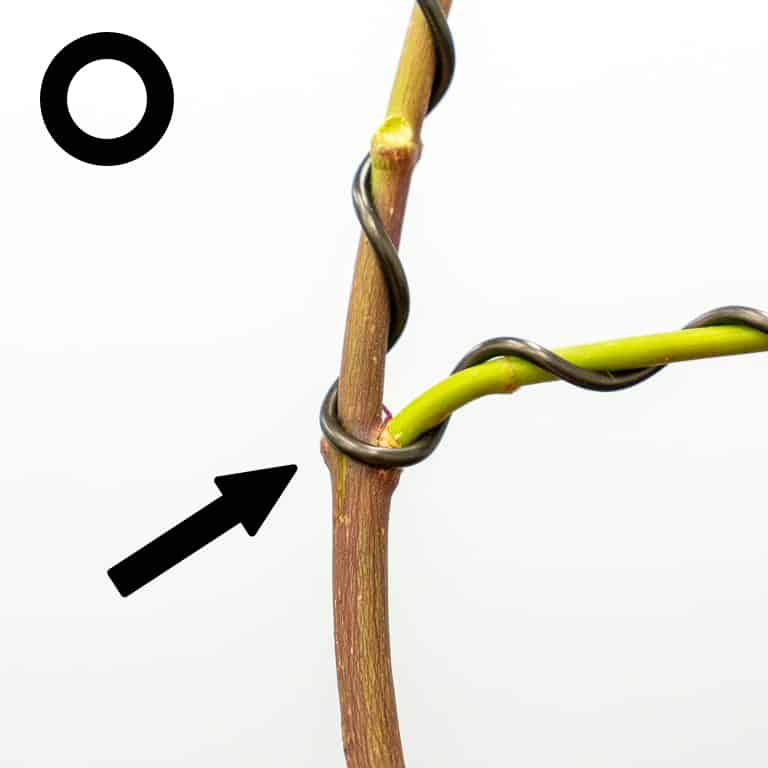
Wire crossing the branch shoulder
When connecting two branches with one piece of wire, you might find that the first pattern applies to one end of the wire, and the second pattern applies to the other end of the wire.
With practice, these adjustments can become natural, and fewer branches will split off when branches are set. There are plenty of other ways to break wired branches, but we’ll stop here for today.
Interview with Bill Valavanis published this week on the Bonsai Wire Podcast
The bonsai teacher, publisher of International Bonsai Magazine, and organizer of the US National Bonsai Exhibition, William N. Valavanis, joined Michael Hagedorn and I for a recent episode of the Bonsai Wire Podcast. Hear Bill share his approach to styling trees along with stories from his 58 years in bonsai at:
Bonsai Wire Podcast
Subscribe to Bonsai Tonight
New Posts Delivered Every Tuesday and Friday
Ben Goodman says
Thanks so much for this tip! Not just for the correct way, but also for the clear pictures and the common, but incorrect, way. I have definitely experienced this. How much difference a few mm can make!
Jonas Dupuich says
Thanks, Ben!
Christel Cherville says
Merci !
Très intéressant !
Jonas Dupuich says
Thank you Christel!
Charles Mosse says
What Ben said. I have broken a few small branches before and did adjust the wire upwards. But I am going to move the wire a bit higher on the junction like you show in your photos. Thanks!!!
Jonas Dupuich says
Sounds good Charlie – let us know how it goes!
Gabe Monetti says
Another great post, Jonas, but I’d like to add a detail. One of the reasons I tend to stay a bit shy it’s because I want to leave room for the next wire to be placed just above (connecting the branch on the right of your picture to a potential mate above left) without creating the “trapeze” effect. That’s especially true if (as it happens) you need a third wire on top of the first two. Just my 2 cents..
Jonas Dupuich says
Thanks Gabe, that makes all kinds of sense. I’ll have to do another post showing how the wires line up when there’s more than wire one at the intersection.
Karl Bethke says
Jonas –
I love and appreciate your posts! They are all insightful and interesting. However, I am not in agreement with this one. If the branch is to be bent downward, which is usually what we want to do, the first wire wrap transitioning from the trunk to the branch must be from above the branch. The same idea applies to wiggles in the branch itself. We want the wire on the outside of any bend. When the branch is bent, the metal in the wire is stretched, and it is this stretching and new atomic structure that holds the branch in place. In contrast if the wire is on the inside of a bend the wire undergoes compression, and the atoms resist this because they are already as close together as they can get.
Thanks again for your many great posts,
Jonas Dupuich says
Hi Karl – thanks so much for the note! In the first example, are you saying that the wire position is correct in the first photo, or that there’s another approach you’d take that’s not pictured here?
The branches in this post are from a Japanese maple, a species that I wouldn’t typically be bending too far downward. If the original angles were closer to horizontal and I wanted to bend them down, I’d likely select a wire position between the two positions pictured here. Is that what you had in mind or something else?